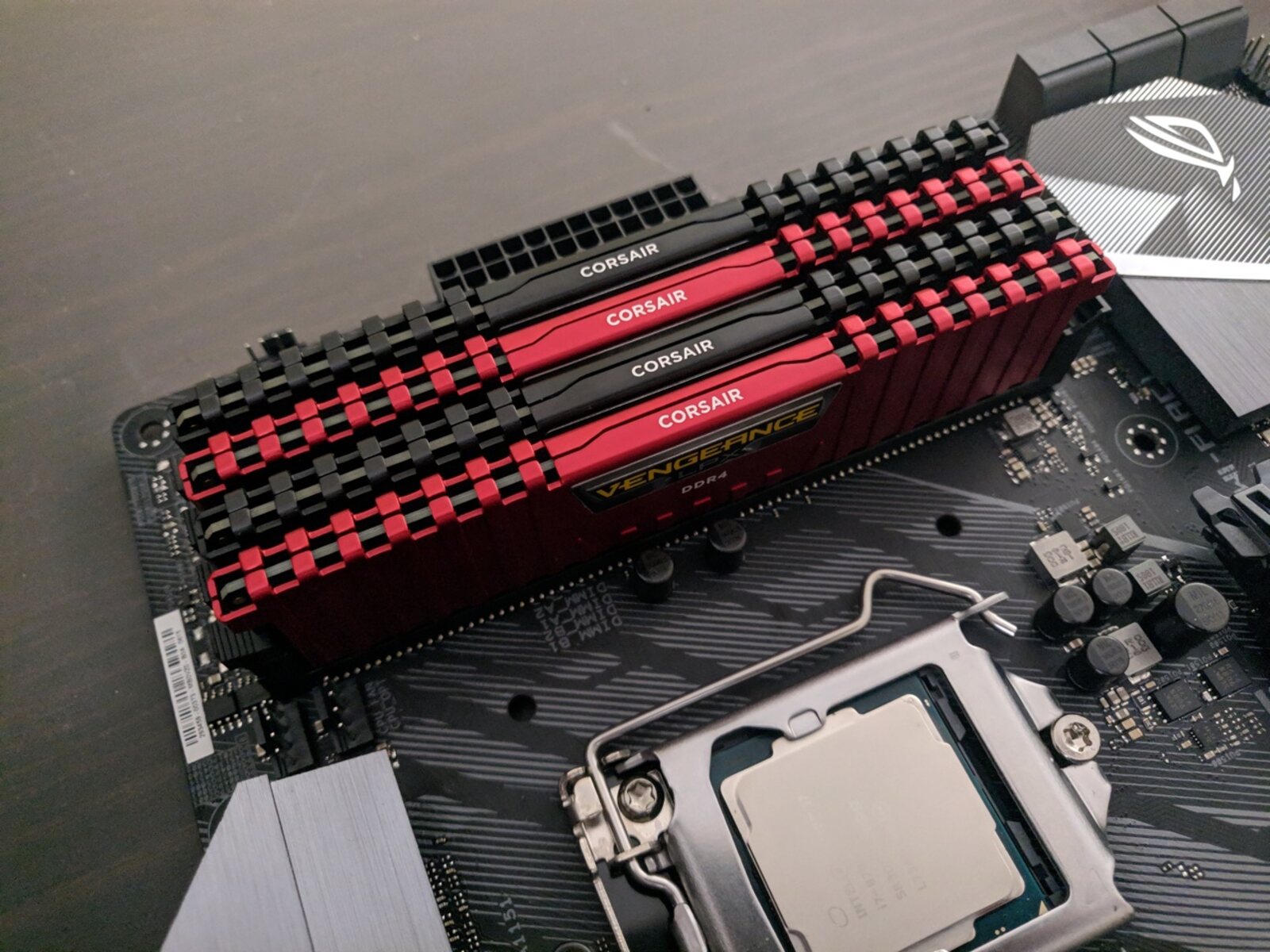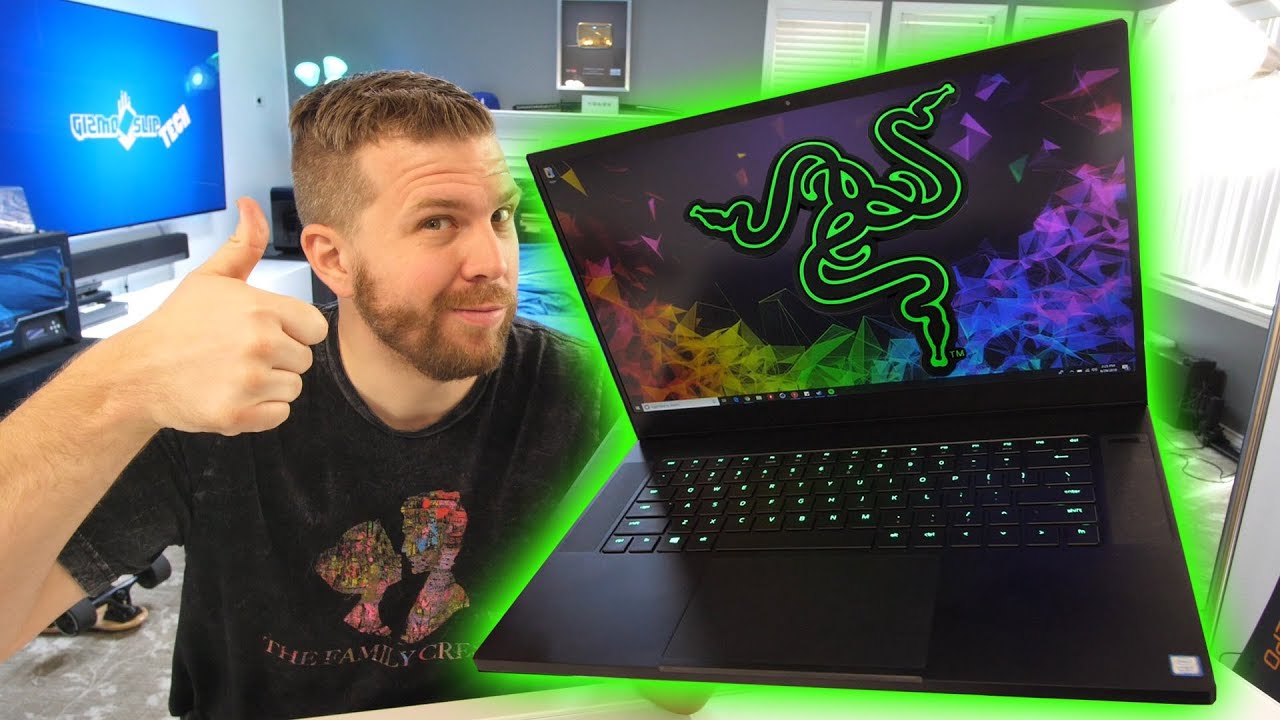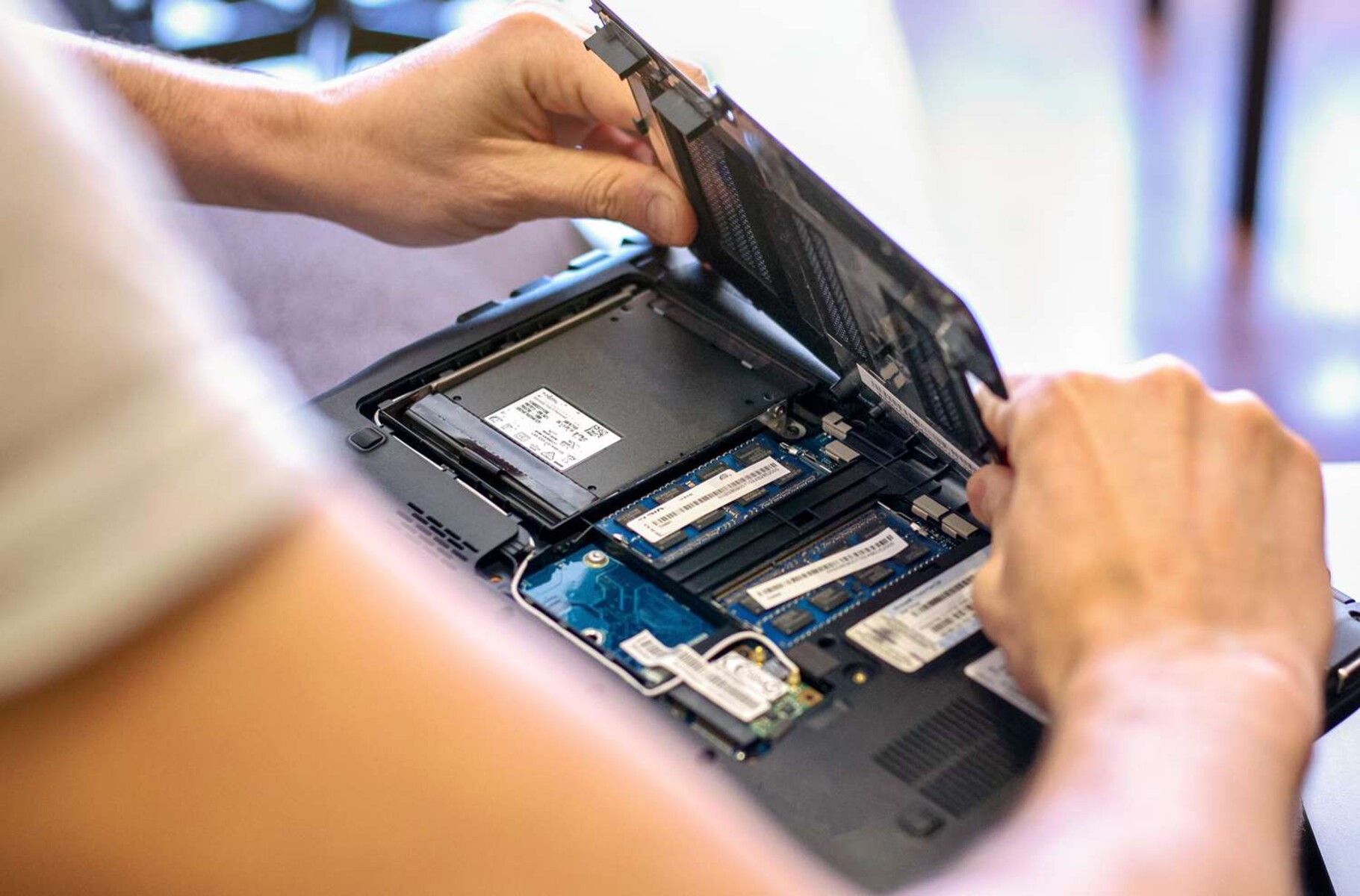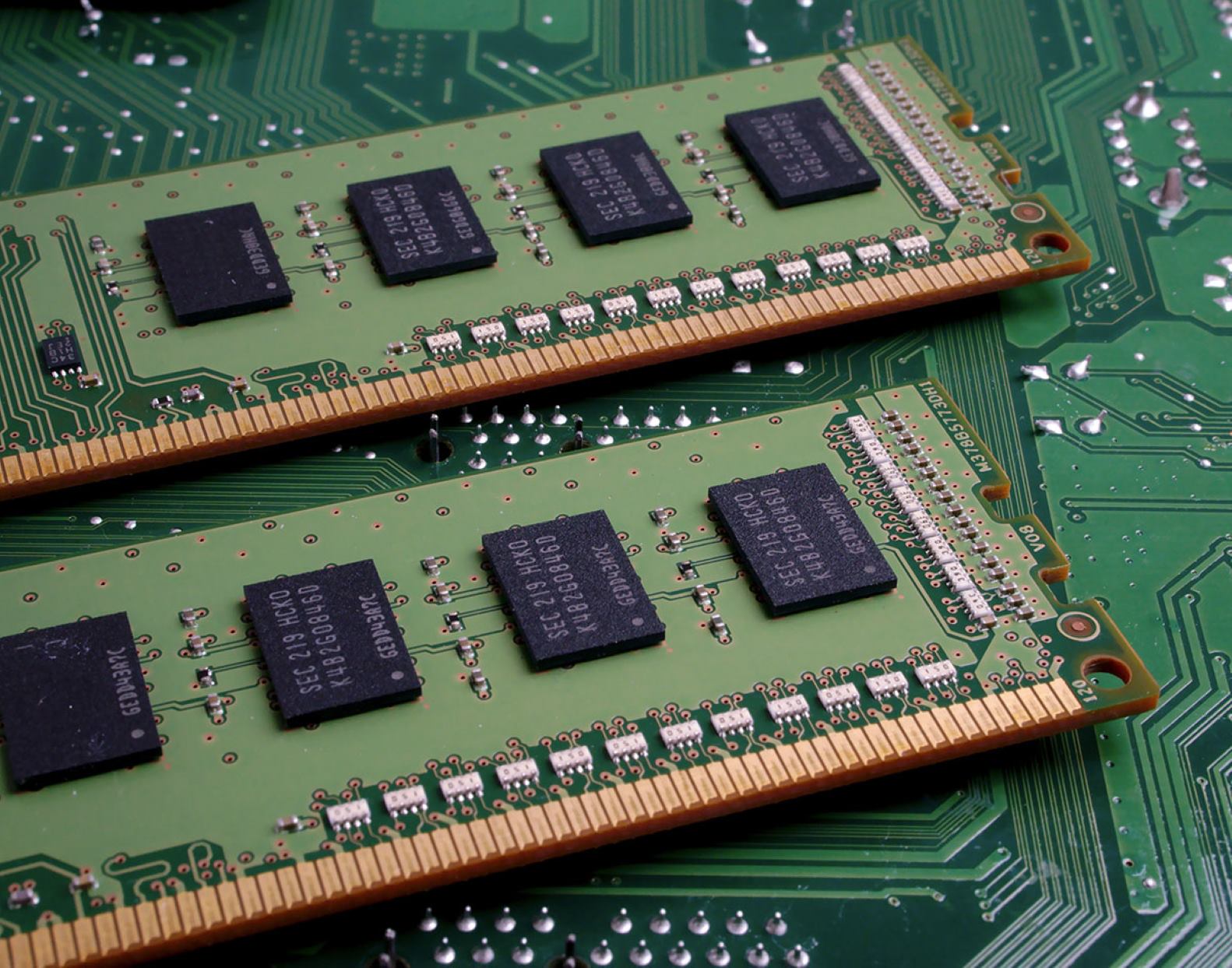Gaming and Virtual Reality
Gaming enthusiasts know that a smooth and immersive gaming experience requires a powerful system. With the increasing demand for high-quality graphics and seamless gameplay, having 64GB of RAM can greatly enhance your gaming sessions.
When playing graphically intensive games, a significant amount of RAM is required to store and process the game assets, textures, and game data. With 64GB of RAM, you can ensure that your games load quickly and run smoothly, even in the most demanding scenarios.
Moreover, virtual reality (VR) gaming has gained immense popularity in recent years. VR games require a lot of system resources to render the virtual world in real time. With 64GB of RAM, your gaming rig will have enough memory to handle the additional workload of VR games, resulting in a more immersive and realistic experience.
Additionally, having a large amount of RAM is beneficial for multitasking while gaming. You can run background applications, such as game capture software, voice chat programs, or streaming tools, without experiencing any slowdowns or performance issues.
Furthermore, future-proofing your gaming setup is essential in the rapidly evolving world of technology. Games are becoming more resource-intensive, and having 64GB of RAM ensures that your system will be able to handle upcoming game releases without any bottlenecks or compatibility issues.
To summarize, having 64GB of RAM is ideal for gaming and virtual reality enthusiasts who want to enjoy smooth gameplay, run resource-intensive VR games, multitask seamlessly, and future-proof their gaming setup. So, if you are passionate about gaming and want to take your gaming experience to the next level, investing in a system with 64GB of RAM is definitely a wise decision.
Video Editing and Production
Video editing and production require a significant amount of processing power, especially when working with high-resolution footage and complex visual effects. Having 64GB of RAM can greatly enhance your workflow and productivity in this field.
When editing videos, the software you use, such as Adobe Premiere Pro or Final Cut Pro, relies heavily on RAM to store and process the video clips, effects, and transitions. With 64GB of RAM, you can smoothly handle and manipulate large video files, reducing rendering times and increasing editing efficiency.
Moreover, if you work with multiple video editing applications simultaneously, having more RAM is crucial. It allows you to seamlessly switch between programs, import/export files, and preview your projects in real time without experiencing lag or performance issues.
Furthermore, complex visual effects, such as motion tracking, chroma keying, and 3D rendering, require a large amount of RAM to process. With 64GB of RAM, you can work on intricate visual effects with ease, making your videos more visually appealing and professional-looking.
In addition to video editing, having ample RAM is also advantageous during the rendering and exporting process. High-quality video rendering can put a strain on your system’s resources, but with 64GB of RAM, you can significantly reduce rendering times and expedite the delivery of your final projects.
In summary, having 64GB of RAM is highly beneficial for video editing and production professionals. It allows for seamless editing of high-resolution footage, smooth multitasking between editing applications, efficient handling of complex visual effects, and faster rendering and exporting times. With 64GB of RAM, you can take your video editing skills to the next level and deliver top-notch videos to your clients or audience.
3D Modeling and Rendering
Creating and rendering complex 3D models requires a significant amount of computing power, and having 64GB of RAM can greatly enhance your workflow and efficiency in the field of 3D modeling and rendering.
When working with 3D modeling software like Autodesk Maya or Blender, a large amount of RAM is essential for storing and processing the intricate details of your models. With 64GB of RAM, you can handle more complex and detailed models, allowing for smoother sculpting, modeling, and texturing processes.
In addition to modeling, rendering is a crucial step in the 3D production pipeline. By leveraging the power of 64GB of RAM, your rendering software, such as Arnold or Octane Render, can use more memory to store textures, calculate lighting, and process complex shaders. This results in faster and more efficient rendering times, allowing you to visualize your 3D models in high-quality detail.
Moreover, working with large datasets or scenes in 3D modeling can put a strain on your system’s resources. With 64GB of RAM, you can navigate and manipulate complex scenes with ease, reducing lag and optimizing your workflow. This is particularly beneficial for architectural visualization, product design, or animation projects that involve intricate and detailed environments.
Furthermore, 3D rendering often requires multitasking with other applications, such as Photoshop or After Effects. With 64GB of RAM, you can run these applications simultaneously, seamlessly switching between programs and incorporating post-processing effects into your rendered images or animations.
In summary, having 64GB of RAM is highly advantageous for 3D modeling and rendering professionals. It enables smooth and detailed modeling processes, faster and more efficient rendering times, optimized workflow for working with complex scenes, and seamless multitasking with other software applications. With 64GB of RAM, you can bring your 3D creations to life and achieve stunning visual results in your projects.
Data Analysis and Scientific Computing
Data analysis and scientific computing involve processing and manipulating large datasets and running complex algorithms. Having 64GB of RAM can significantly enhance your capabilities in these fields, enabling faster and more efficient analysis and computation.
When working with large datasets, such as genomic data or financial datasets, a large amount of RAM is crucial for loading and manipulating the data. With 64GB of RAM, you can handle larger datasets, reducing the need for frequent disk access and improving overall analysis speed.
In addition to handling large datasets, running complex algorithms and simulations require substantial memory. With 64GB of RAM, you can run computationally intensive tasks more efficiently, enabling faster execution and reducing bottlenecks in your workflow.
Furthermore, in scientific computing, implementing and optimizing numerical algorithms can greatly benefit from having abundant RAM. With 64GB of RAM, you can store and manipulate intermediate results, allowing for faster and more accurate computations, and facilitating the development of sophisticated models and simulations.
Moreover, when working with programming languages like Python, R, or MATLAB, having sufficient RAM ensures smooth execution of code and eliminates resource limitations. With 64GB of RAM, you can load large libraries and packages, efficiently process and analyze data, and ensure seamless integration with other tools and frameworks.
Additionally, having more RAM enables better utilization of virtual memory, reducing the need for frequent disk swapping. This results in improved overall system performance and faster execution of data analysis tasks.
In summary, 64GB of RAM is highly beneficial for data analysis and scientific computing professionals. It allows for efficient handling of large datasets, faster execution of complex algorithms, optimization of numerical computations, smooth execution of code in programming languages, and improved system performance. With 64GB of RAM, you can tackle data analysis and scientific computing tasks with ease and achieve faster and more accurate results in your research or analysis projects.
Machine Learning and Artificial Intelligence
Machine learning and artificial intelligence (AI) require substantial computational resources, especially when training complex models and processing large datasets. Having 64GB of RAM can greatly enhance your capabilities in these fields, enabling faster and more efficient training and inference.
When training machine learning models, a significant amount of data needs to be loaded into memory for processing. With 64GB of RAM, you can handle larger datasets, reducing the need for frequent disk access and improving overall training speed. This is particularly beneficial for deep learning models that require extensive memory for storing weight matrices and backpropagation computations.
In addition to handling large datasets, having ample RAM allows for faster training and hyperparameter optimization. With 64GB of RAM, you can store and manipulate intermediate results efficiently, leading to accelerated model convergence and more accurate predictions.
Furthermore, when deploying AI models for real-time inference, having sufficient memory is essential for storing model parameters and processing input data. With 64GB of RAM, you can accommodate the memory requirements of the model, allowing for smooth and efficient inference, even in complex and demanding scenarios.
Moreover, in machine learning research, experimentation and model development often involve multitasking with other tasks, such as data preprocessing, feature engineering, or visualization. With 64GB of RAM, you can run multiple processes simultaneously, seamlessly switching between tasks and improving overall research productivity.
Additionally, having more RAM enables parallel processing and distributed computing, which are crucial for scaling machine learning pipelines and training models on large clusters or cloud platforms. With 64GB of RAM, you can efficiently handle distributed data processing frameworks like Apache Spark or TensorFlow Extended, enabling faster model training and evaluation.
In summary, having 64GB of RAM is highly beneficial for machine learning and artificial intelligence professionals. It allows for efficient handling of large datasets, faster model training and inference, seamless multitasking during model development, and scalability in parallel and distributed computing. With 64GB of RAM, you can tackle machine learning and AI tasks with ease, and achieve faster and more accurate results in your projects and research.
Server and Database Management
Server and database management involve handling large amounts of data and ensuring efficient performance of systems. Having 64GB of RAM can greatly improve your server and database management capabilities, enabling faster data processing and smoother operations.
When managing servers, having ample RAM is crucial for accommodating multiple processes and services simultaneously. With 64GB of RAM, you can run various applications, such as web servers, email servers, or database management systems, without experiencing performance issues or resource limitations.
In addition, databases play a vital role in storing and retrieving data for organizations. With 64GB of RAM, you can enhance the performance of database management systems, such as MySQL or Oracle, by reducing disk I/O operations. This allows for faster query processing and improved response times, resulting in seamless data access and retrieval.
Furthermore, having more RAM enables effective database caching. Frequently accessed data can be stored in memory, reducing the need for disk access and improving overall database performance. With 64GB of RAM, you can maintain a larger cache size, leading to faster data retrieval and better system responsiveness.
Moreover, when managing large-scale databases or big data systems, having sufficient RAM is essential for handling the processing and manipulation of massive datasets. With 64GB of RAM, you can efficiently execute data transformations, complex queries, and analytics tasks, leading to improved data management and analysis capabilities.
Additionally, having more RAM allows for better management of virtualized environments. If you use virtual machines to host multiple servers or databases, having 64GB of RAM ensures that each virtual instance has enough memory to operate smoothly, avoiding resource contention and performance issues.
In summary, 64GB of RAM is highly advantageous for server and database management professionals. It allows for efficient multitasking of server applications, improved database performance through caching and reduced disk I/O, enhanced processing and manipulation of large datasets, and optimized operation of virtualized environments. With 64GB of RAM, you can ensure smooth and efficient server and database operations, enabling seamless data management and retrieval.
Running Multiple Operating Systems and Virtual Machines
Running multiple operating systems and virtual machines (VMs) concurrently can greatly increase your productivity and flexibility. Having 64GB of RAM allows for seamless operation of multiple OS environments and efficient utilization of virtualization resources.
One of the key benefits of having 64GB of RAM is the ability to allocate sufficient memory to each virtual machine. With this much memory, you can create and run several VM instances simultaneously without experiencing performance bottlenecks or resource constraints. This is particularly useful for developers or IT professionals who need to test software compatibility across different operating systems or simulate complex network environments.
Moreover, running multiple operating systems using virtualization platforms like VMware or VirtualBox requires a significant amount of RAM to ensure smooth performance. With 64GB of RAM, you can allocate sufficient memory to each virtual machine, giving them the necessary resources to run optimally.
Furthermore, if you work with resource-intensive applications or development tools that span across different operating systems, having ample RAM can improve your workflow. It allows for seamless switching between different environments, enabling you to take advantage of the strengths and capabilities of each operating system without experiencing lag or slowdowns.
In addition, virtual machines often require additional memory for disk caching and temporary storage. With 64GB of RAM, you can allocate enough memory to these caching systems, optimizing performance and reducing reliance on slower disk-based storage.
Additionally, having more RAM allows for a smoother experience when transferring data between host and guest operating systems. It enables faster data access and reduces latency, resulting in quicker file transfers and improved overall system performance.
In summary, having 64GB of RAM is highly advantageous when it comes to running multiple operating systems and virtual machines. It allows for the efficient allocation of memory resources to each VM, seamless operation of multiple OS environments, smoother performance of resource-intensive applications, and better data transfer speeds. With 64GB of RAM, you can maximize the benefits of virtualization and effectively manage multiple operating systems or software environments simultaneously.
Audio Production and Music Composition
Audio production and music composition require a powerful system to handle the demands of recording, editing, and processing high-quality audio files. Having 64GB of RAM can significantly enhance your workflow in these fields, enabling faster and more efficient audio production and music composition.
When working with digital audio workstations (DAWs) such as Pro Tools, Logic Pro, or Ableton Live, a substantial amount of RAM is necessary for loading and processing audio tracks and effects. With 64GB of RAM, you can work with larger and more complex audio projects, reducing the need for temporary disk caching and improving overall performance.
In addition to recording and editing, software synthesizers and virtual instruments play a crucial role in music composition. These instruments require a significant amount of RAM to load and process the complex sound libraries and samples. With 64GB of RAM, you can run multiple instances of virtual instruments simultaneously, enabling more elaborate compositions and enhancing your creative possibilities.
Furthermore, audio processing tasks, such as mixing, mastering, and applying audio effects, can strain your system’s resources. With 64GB of RAM, you can handle the real-time processing of multiple audio tracks and effects seamlessly, without experiencing any lag or performance degradation.
Moreover, working with high-resolution audio files, such as those used in professional audio production or film scoring, demands ample RAM for smooth playback and editing. With 64GB of RAM, you can load and manipulate higher quality audio files without compromising system performance or facing limitations on track count.
Additionally, having more RAM is advantageous when working with plugins and audio effects. Many professional plugins use memory-intensive algorithms to achieve complex sound processing. With 64GB of RAM, you can use a wide range of plugins simultaneously, without worrying about exceeding memory limits or compromising audio quality and performance.
In summary, 64GB of RAM is highly beneficial for audio production and music composition professionals. It allows for seamless handling of larger audio projects, better performance when using virtual instruments and plugins, smoother processing of audio effects, and improved overall system responsiveness. With 64GB of RAM, you can unleash your creativity and produce high-quality audio projects with efficiency and ease.
Streaming and Content Creation
Streaming and content creation have become increasingly popular in the digital age, requiring significant computational resources to produce high-quality videos, stream live content, and engage with audiences. Having 64GB of RAM can greatly enhance your capabilities in streaming and content creation, enabling smoother performance and better productivity.
When it comes to streaming, having ample RAM is essential for running streaming software, such as OBS Studio or XSplit. With 64GB of RAM, you can ensure smooth encoding and broadcasting of high-quality videos without sacrificing system performance. It allows for seamless multitasking during live streams, such as managing chat interactions, monitoring analytics, or using overlays and effects to enhance the viewer experience.
In addition to streaming, content creation often involves working with resource-intensive software, such as video editing programs, graphic design tools, or 3D modeling software. With 64GB of RAM, you can efficiently handle large multimedia files and complex projects, reducing rendering times and improving overall productivity. It enables smoother playback and real-time editing, allowing you to create and edit content with ease.
Furthermore, having more RAM is beneficial when working with multiple layers, effects, and transitions in video editing or graphic design. With 64GB of RAM, you can handle complex projects without experiencing lag or performance issues. It also enables faster previewing and exporting of content, streamlining the content creation process.
Moreover, live streaming involves communication and interactivity with viewers, which often requires running additional applications alongside the streaming software. With 64GB of RAM, you can run chat applications, overlay widgets, donation trackers, or analytics tools without hindering the performance of the streaming software, resulting in a smooth and engaging live streaming experience.
Additionally, having more RAM allows for smoother performance when working with high-resolution images, animations, or 3D models. It enhances the quality and detail of visual content, making it more appealing to viewers. With 64GB of RAM, you can handle resource-intensive tasks in content creation, such as rendering high-quality videos or creating intricate visual effects.
In summary, 64GB of RAM is highly advantageous for streaming and content creation professionals. It enables smoother live streaming, efficient handling of resource-intensive software, faster rendering and exporting times, seamless multitasking during content creation, and improved overall system performance. With 64GB of RAM, you can elevate your streaming and content creation endeavors and deliver engaging and high-quality content to your audience.
CAD and Engineering Design
CAD (Computer-Aided Design) and engineering design involve creating and manipulating complex 2D and 3D models, which require robust computational resources. Having 64GB of RAM can significantly enhance your capabilities in CAD and engineering design, providing a smoother and more efficient design workflow.
When working with CAD software like AutoCAD, SolidWorks, or CATIA, a substantial amount of RAM is necessary for loading and processing intricate designs. With 64GB of RAM, you can handle larger and more complex drawings and models, reducing lag and improving overall performance. This allows for faster design iterations and helps optimize the design process.
In addition to handling large models, having ample RAM is crucial when working with simulations and analysis in engineering design. Software like ANSYS or MATLAB Simulink requires significant memory resources to run complex simulations of mechanical, thermal, or fluid dynamics. With 64GB of RAM, you can efficiently execute simulations and analyze the results without compromising system performance.
Furthermore, in 3D modeling and design, having more RAM allows for smoother navigation and manipulation of models in the viewport. Complex assemblies or architectural designs can require a lot of memory to store textures, meshes, and visual data. With 64GB of RAM, you can work with these intricate models more effectively, reducing the risk of crashes or slowdowns during the design process.
Moreover, in engineering design, collaboration and file exchange are essential. Sharing design files, importing/exporting data, and performing data management tasks can benefit from having more RAM. With 64GB of RAM, you can work with larger files and handle multiple projects simultaneously, facilitating collaboration and streamlining the file exchange process.
Additionally, rendering and visualization are important aspects of CAD and engineering design. Having more RAM allows for better performance when creating photo-realistic renderings and visualizations of designs. With 64GB of RAM, you can allocate sufficient memory for rendering software, reducing rendering times and enhancing the quality of visual representations of your designs.
In summary, 64GB of RAM is highly beneficial for CAD and engineering design professionals. It allows for seamless handling of complex models, smoother performance during simulations and analysis, optimized design workflows, better collaboration and file exchange processes, and improved rendering and visualization capabilities. With 64GB of RAM, you can elevate your CAD and engineering design capabilities, resulting in more efficient and successful design projects.

























